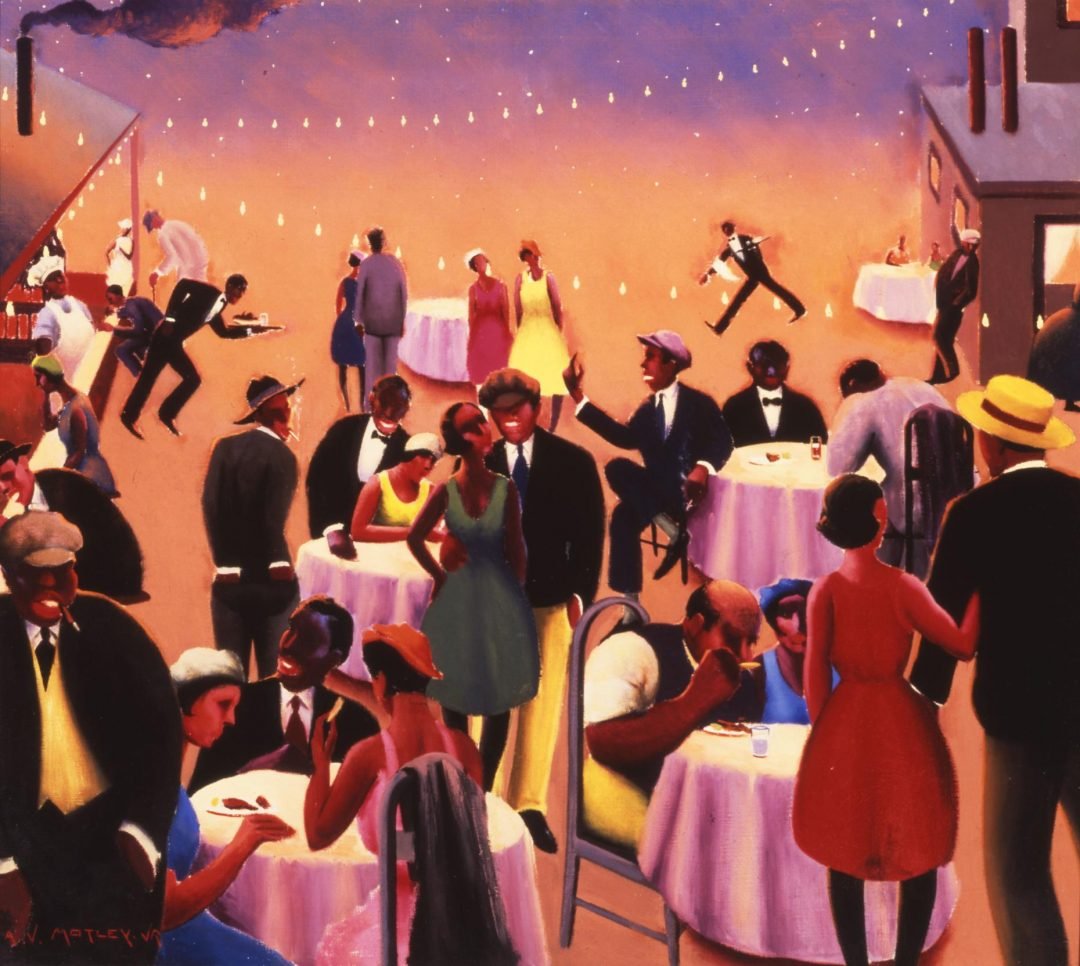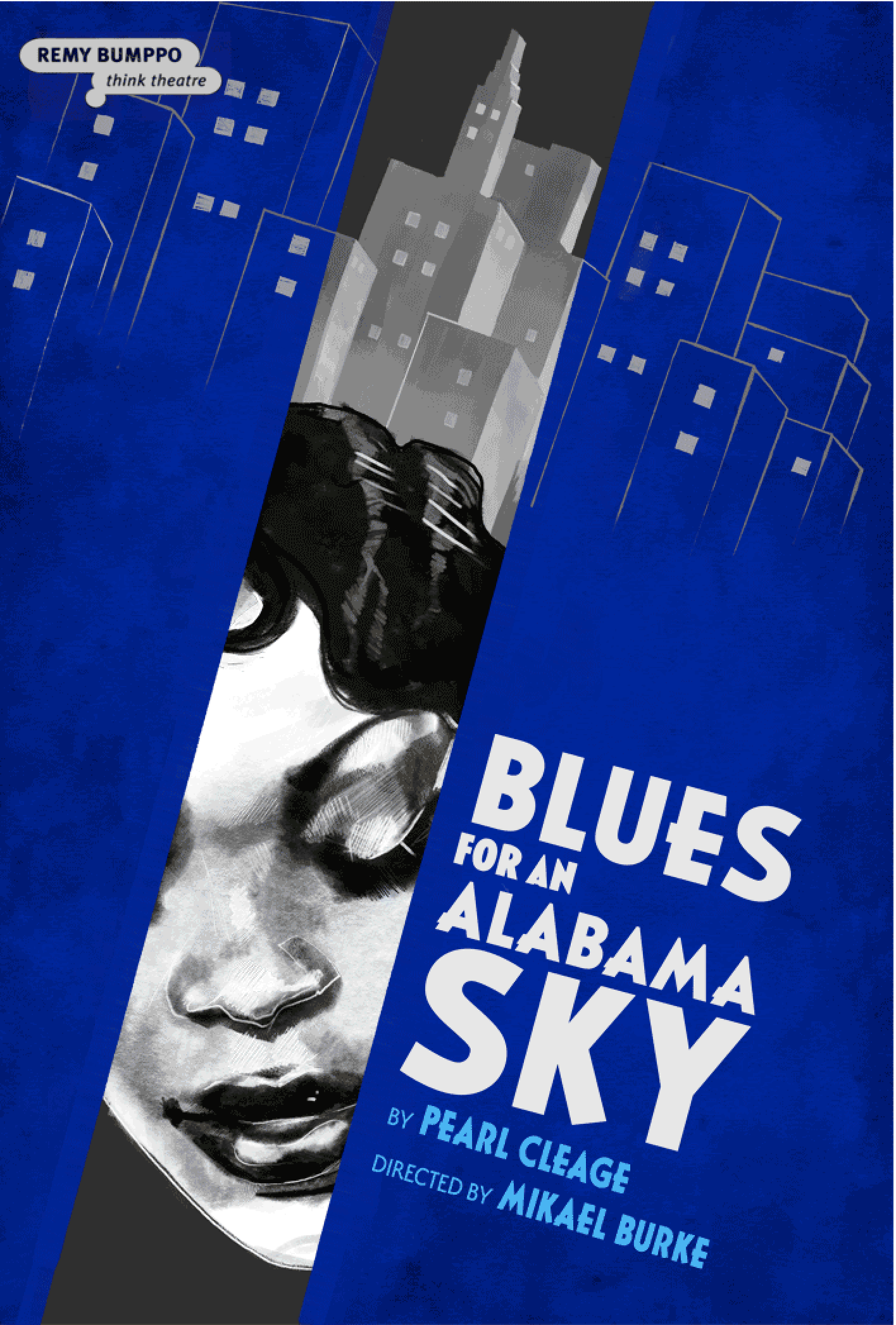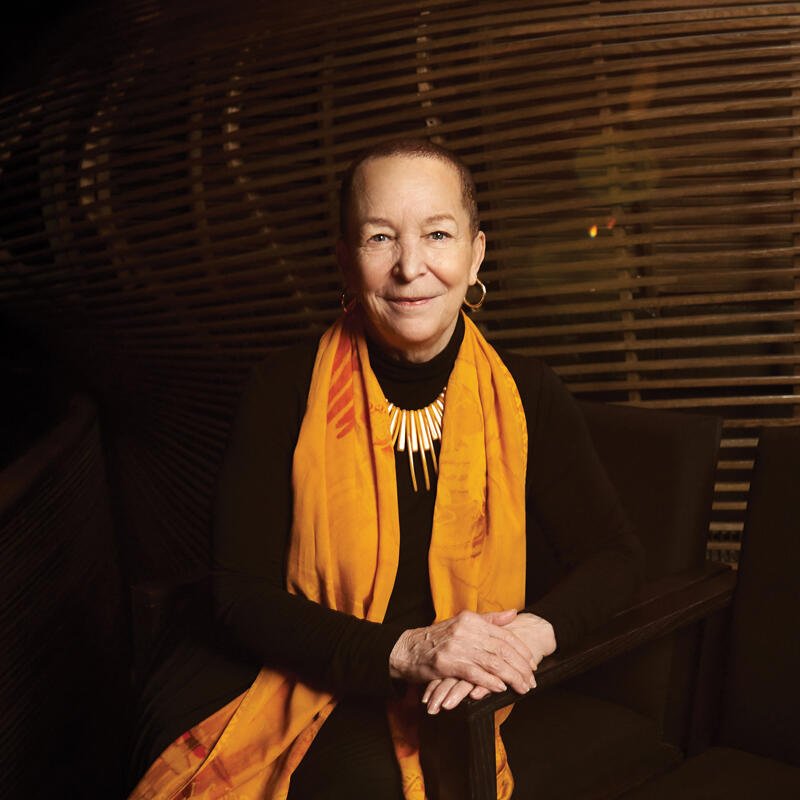
Words to Know!
About the Playwright
〰️
About the Playwright 〰️
Pearl Cleage
Pearl Cleage is an Atlanta-based writer whose works include three novels, a dozen plays, two books of essays, and a book of short fiction. She is also a performance artist, collaborating frequently with her husband, Zaron W. Burnett, Jr.
She is a frequent contributor to anthologies and has been featured recently in Proverbs for the People, Contemporary African American Fiction, and in Mending theWorld, Stories of Family by Contemporary Black Writers.
She is a Contributing Writer to ESSENCE Magazine, and in 1998, her novel, What Looks Like Crazy On An Ordinary Day was an Oprah Book Club pick and spent nine weeks on The New York Times bestseller list.
“Making our History”
An interview with the Playwright and Douglas Langworthy
LANGWORTHY: Why did you set this play at the start of the Great Depression, in the period of transition just after the Harlem Renaissance of the 1920s?
CLEAGE: I've always been drawn to the Harlem Renaissance. I loved the writing that emerged from there. Once I started reading more about the period I realized that a lot of the questions that these characters are dealing with are really very contemporary. Most of what I had seen about the Renaissance focused on its heyday, around 1925-26. I became more interested in the end of the Renaissance; it's a very different situation when the money dries up, because the patrons have lost their money in the stock market crash and are no longer able to support the artists. I wanted to look at what their options were once the heyday had passed.
Many famous figures lurk just offstage in the play: Josephine Baker, the Rev. Adam Clayton Powell, Langston Hughes. And yet you chose to center the play around a group of characters we haven't heard of.
I am not a historian, and I'm not interested in doing all the research to write a play where Langston Hughes is the central character. Especially as an African American, we tend to pluck out people and put them forward as role models, as heroes--but we pluck them out of their communities, so that there is no context for them. They are made more respectable, they have no rough edges, they never do the things that regular people do.
In a sense, that lack of context relieves all of us regular people of the responsibility for making the history. Adam Clayton Powell didn't make history all by himself--he had a church with 20,000 members. He couldn't have been the person we know as Adam Clayton Powell if those 20,000 people (whose names we don't know) hadn't been there every Sunday putting money in the plate, running those programs to feed hungry people.
LANGWORTHY: You deal with a number of social issues in Blues, but what dominates the play are your vivid characters and the friendships that sustain them.
CLEAGE: In this play, and also in Flyin' West, I'm very conscious of new family groupings. In the period of Blues, a lot of people had been separated from their families because they had come north in the Great Migration. They had to find new families, new brothers and sisters. I think that the relationship between Angel and Guy is very much like that--they're almost like brother and sister because they are the only family that they have.
LANGEWORTHY: How have audiences reacted to Guy's open homosexuality?
CLEAGE: I know there is homophobia in the country generally, and especially within the black community. So I was very curious about how audiences would respond, not only because Guy is gay, but because he has no angst about it--he's not closeted, he's not scared, he carries a straight razor. He is completely the opposite of the tormented gay character that we know is going to die at the end. When Blues opened in Atlanta, I was really happy that people responded so enthusiastically to him. It's wonderful to look at people in the audience whom I know have a lot of homophobia in their daily lives cheering and saying, "Go on, brother!" to a guy on the stage, where they probably would be very nervous to do that in real life.
LANGEWORTHY: Do you think theatre has the power to help people change their minds?
CLEAGE: Oh, I do. Theatre can be so productive because, if we do it right, it doesn't beat people over the head and make them defensive. This play, for instance, doesn't announce that you will have to examine your feelings about homosexuality, it just introduces a character that you like. I hope it helps give people more openness, even just a little bit, towards differences. When Sam tells Leland that Guy is "a man, just like us," that conversation needs to happen.
The violence in the play is black on black, rather than between blacks and whites.
I think that's because I live in an all-black neighborhood, Southwest Atlanta, which is 100- percent black. You have to go several miles in any direction to find someone who is not African American. Walking through the park is not scary because I might run into the Klan--it's scary because I might run into young black crack addicts. Which means that as a writer my role is different, because then I'm not talking about something external. I'm not saying they need to stop preying on us, I'm saying we are doing these things, this is what we do.
LANGEWORTHY: How does Blues fit into your body of work?
CLEAGE: This is the first play in which I've had a black woman character who didn't triumph at the end. In most of my plays, if the woman is weak, she gets stronger; if she's confused, she achieves clarity. When I got to the end of this play, I realized I was trying to make Angel do something that had not been justified by the characters and by their story, which was to go to Paris. I kept trying to force it, but that doesn't work. So I had to come to terms with what it meant for me to create a character who doesn't triumph.
For me it all gets back to responsibility. Certainly we as black people have to be responsible for ourselves and for our own communities. As a playwright I don't want to spend all my time fussing at white racism, but as a feminist, I don't want to spend all my time fussing at men. We as conscious, intelligent, strong women have to take responsibility. I hope that I'll continue to look more and more truthfully at the complexity of my characters, whoever they are, and not be confined in any way by the idea of positive images and role models. The responsibility is to tell the complete truth, and if you do that, the whole question of role models is really moot.
"Blues for an Alabama Sky." American Theatre 13, no. 6 (1996): 21

THE HARLEM RENAISSANCE
The Harlem Renaissance was a blossoming (c. 1918–37) of African American culture, particularly in the creative arts, and the most influential movement in African American literary history. Embracing literary, musical, theatrical, and visual arts, participants sought to reconceptualize “the Negro” apart from the white stereotypes that had influenced black peoples’ relationship to their heritage and to each other. They also sought to break free of Victorian moral values and bourgeois shame about aspects of their lives that might, as seen by whites, reinforce racist beliefs. Never dominated by a particular school of thought but rather characterized by intense debate, the movement laid the groundwork for all later African American literature and had an enormous impact on subsequent black literature and consciousness worldwide. While the renaissance was not confined to the Harlem district of New York City, Harlem attracted a remarkable concentration of intellect and talent and served as the symbolic capital of this cultural awakening.
“As Gay as It Was Black”
By Linda Villarosa
The Harlem of the 1920s, which produced a flowering of art, music and writing, was indisputably gay. Being “in the life” was part of the landscape of the community. The 1983 essay “T’Aint Nobody’s Bizness: Homosexuality in 1920’s Harlem,” by Eric Garber, puts it in sharp focus:
At the beginning of the twentieth century, a homosexual subculture, uniquely Afro-American in substance, began to take shape in New York’s Harlem. Throughout the so- called Harlem Renaissance period, roughly 1920 to 1935, black lesbians and gay men were meeting each other [on] street corners, socializing in cabarets and rent parties, and worshiping in church on Sundays, creating a language, a social structure, and a complex network of institutions.
Nugent, known as the “perfumed orchid of the New Negro Movement,” didn’t hide his sexuality either in life or in print. He contributed the blatantly homoerotic short story “Smoke, Lilies and Jade” to the black literary journal Fire!! in 1926. Speaking about the LGBT presence in Harlem, Nugent noted, “You did what you wanted to. Nobody was in the closet. There wasn’t any closet.”
Everybody who was anybody — gay and straight, black and white, uptown and downtown — knew about the infamous homosexual haunt the Clam House on 133rd Street. Bawdy blues singer Gladys Bentley presided over the raucous fun, all 250 pounds of her cross-dressed in tux and top hat.
A’Lelia Walker, the Joy Goddess of the Harlem Renaissance and daughter of Madam C.J., was especially fond of homosexuals, notes award-winning author David Levering Lewis in his book When Harlem Was in Vogue. Anyone who voiced disapproval risked being uninvited from her lavish and legendary parties.
But gayest of all: the Hamilton Lodge drag ball held every year on 155th Street. Several thousand came to gawk at the cross-dressing extravaganza as hundreds of mainly working-class young men showed up in over-the-top drag.
An Invisible Life?
Despite this kind of freedom and pageantry, homosexuality wasn’t universally accepted. Harlem’s most powerful minister, Adam Clayton Powell, pastor of the Abyssinian Baptist Church until 1937, campaigned against what he saw as the growing scourge of sexual perversion and moral degeneracy. And the annual Hamilton Lodge event was openly referred to as the “parade of the pansies,” “dance of the fairies” and “faggots’ ball.”
Against this complicated landscape, some claim that scholars of the New Negro Movement have erased the LGBT history of the Renaissance in biographies and textbooks. In Gay Voices of the Harlem Renaissance, author Schwarz explains that historians either deliberately or inadvertently sidelined the link between the Harlem Renaissance and homosexuality.
In a 2001 essay ” ‘Outing’ Alain L. Locke,” biographer Leonard Harris accused some scholars of obscuring Locke’s gay life, leading to the false idea that “Locke’s sexuality was irrelevant to his intellectual and personal history.” Locke, the first black Rhodes scholar, is often called the father of the Harlem Renaissance. And when the groundbreaking 1989 film Looking for Langston was released to critical acclaim, the Langston Hughes estate did its best to shut it down. Directed by Isaac Julien, the lyrical film is a gay love letter to Hughes and the Renaissance.
Double Lives
The past isn’t the present, and it would be unfair to slap a 21st-century out-and-proud frame around 20th-century Harlem. Plus, to borrow the words of Renaissance writer Jessie Redmon Fauset, there is confusion: Many of the New Negros who are now identified as gay had spouses of the opposite sex.
Some were bisexual, while others, like Cullen, lived double lives. After his failed marriage, Cullen wed again. Wallace Thurman, author of the novels The Blacker the Berry and Infants of the Spring, was arrested in 1925 for having sex with a man. Thurman married a woman three years later, but the relationship lasted only six months.
The writer Alice Dunbar-Nelson kept a foot in both worlds, according to her diary. After the breakup of her marriage to the poet Paul Laurence Dunbar, she remarried in 1916, creating what Gloria Hull, the editor of Give Us Each Day: The Diary of Alice Dunbar-Nelson, calls “a good professional union.” According to Hull, Dunbar-Nelson’s diary reveals that “the author remained sexually available to women, as did any number of married black women club members.”
The overtly same-sex longings of Renaissance playwright and poet Angelina Weld Grimké can be found in her correspondence with her friend Mamie Burrill. In a letter, she wrote, “Oh Mamie if you only knew how my heart overflows with love for you and how it yearns and pants for one more glimpse of your lovely face.” Weld signed the letter, “Your passionate lover.”
The 1931 novel Strange Brother, by Blaire Niles, sums up the period’s complicated social geography best: “In Harlem I found courage and joy and tolerance,” notes one gay character. “I can be myself there … They all know about me, and I don’t have to lie.”
Other Media
This website was created by Blues for an Alabama Sky’s Dramturgs
Martine Kei Green-Rogers, Ph.D. (she/her)
Dramaturg
Martine is the Dean of the Theatre School at DePaul University. If you are curious about my previous work/resume - click here.
Camille Rose is a rising senior at The Theatre School at DePaul University studying Dramaturgy and Dramatic Criticism.
Assistant Dramaturg













